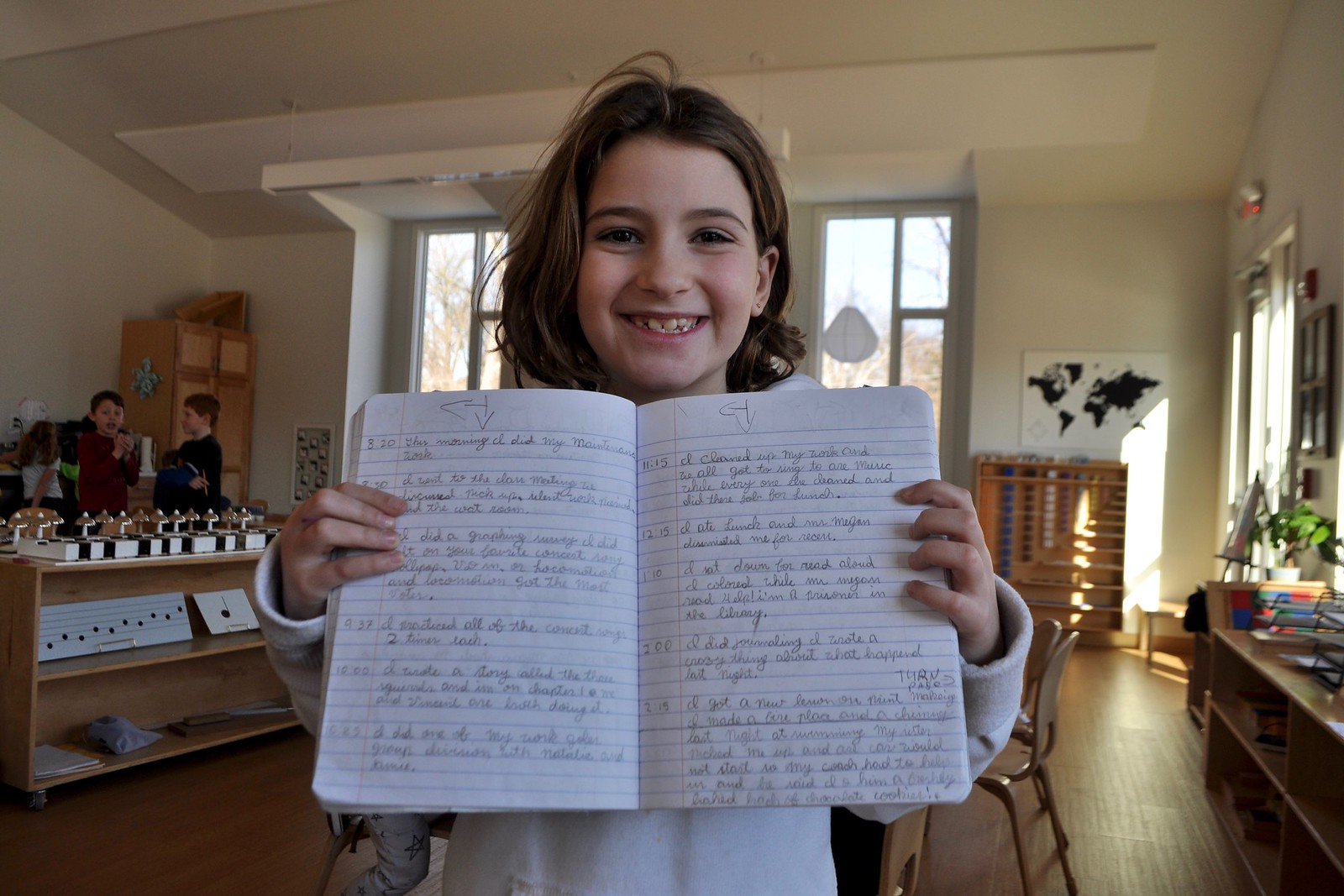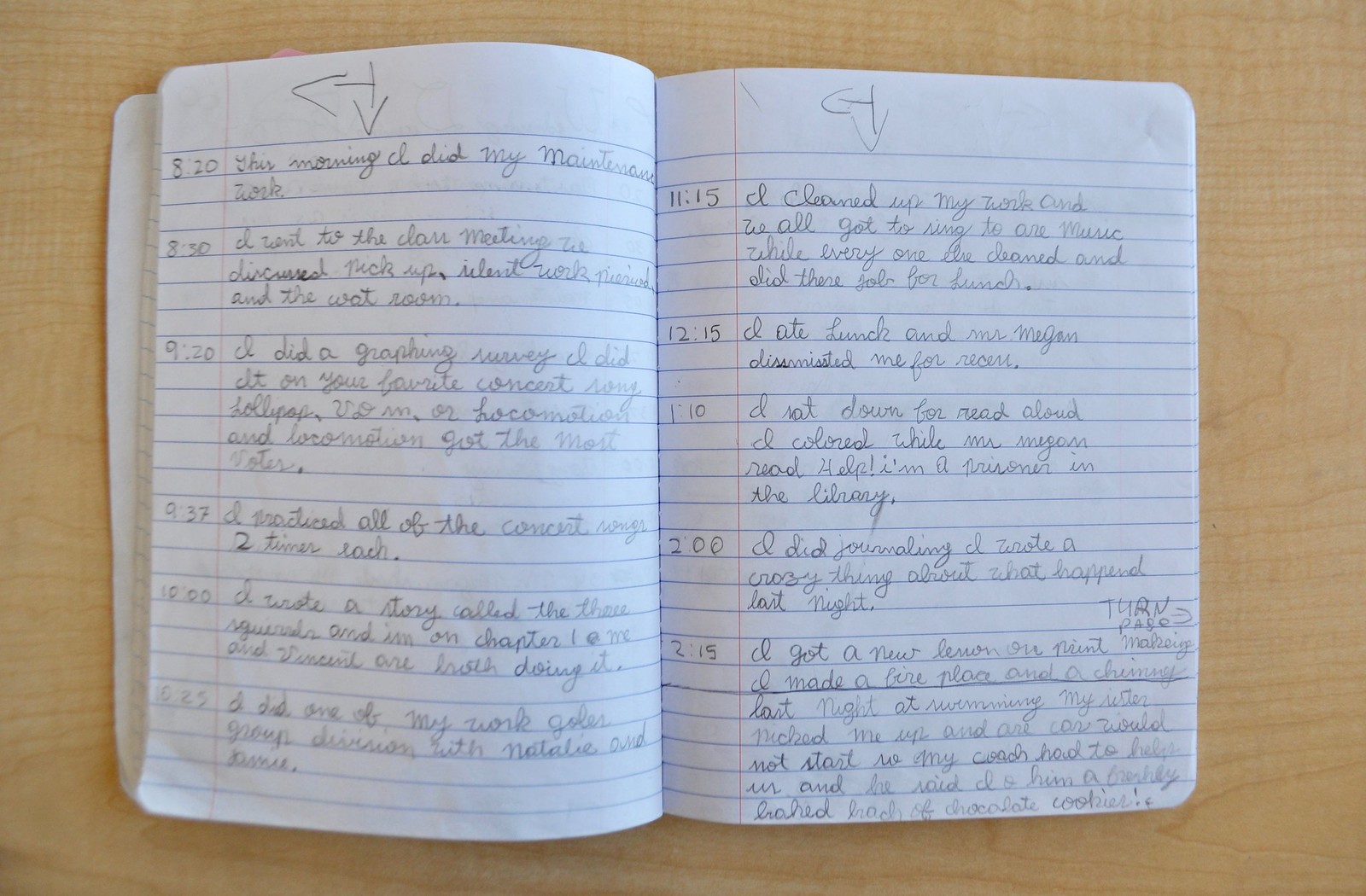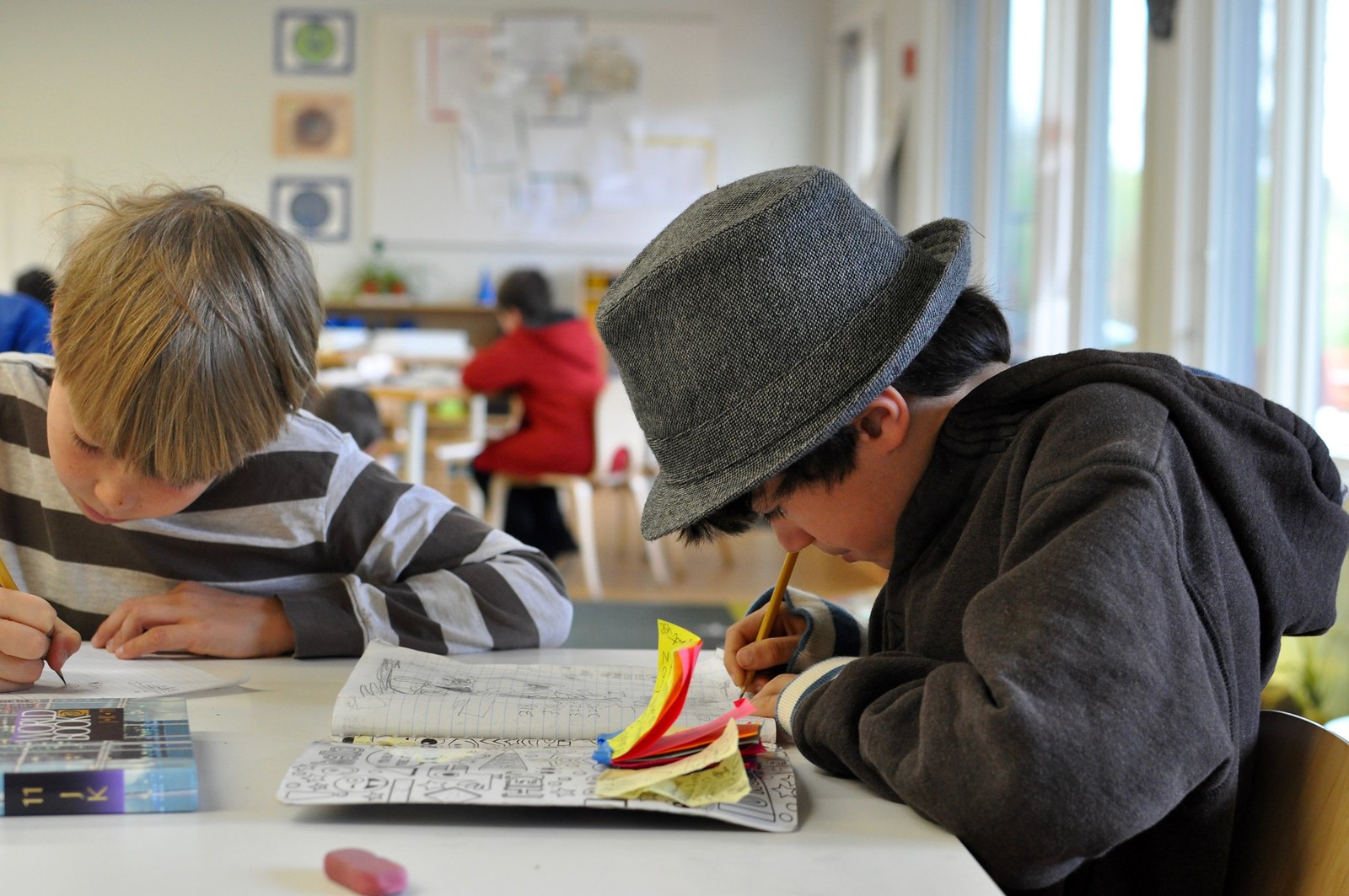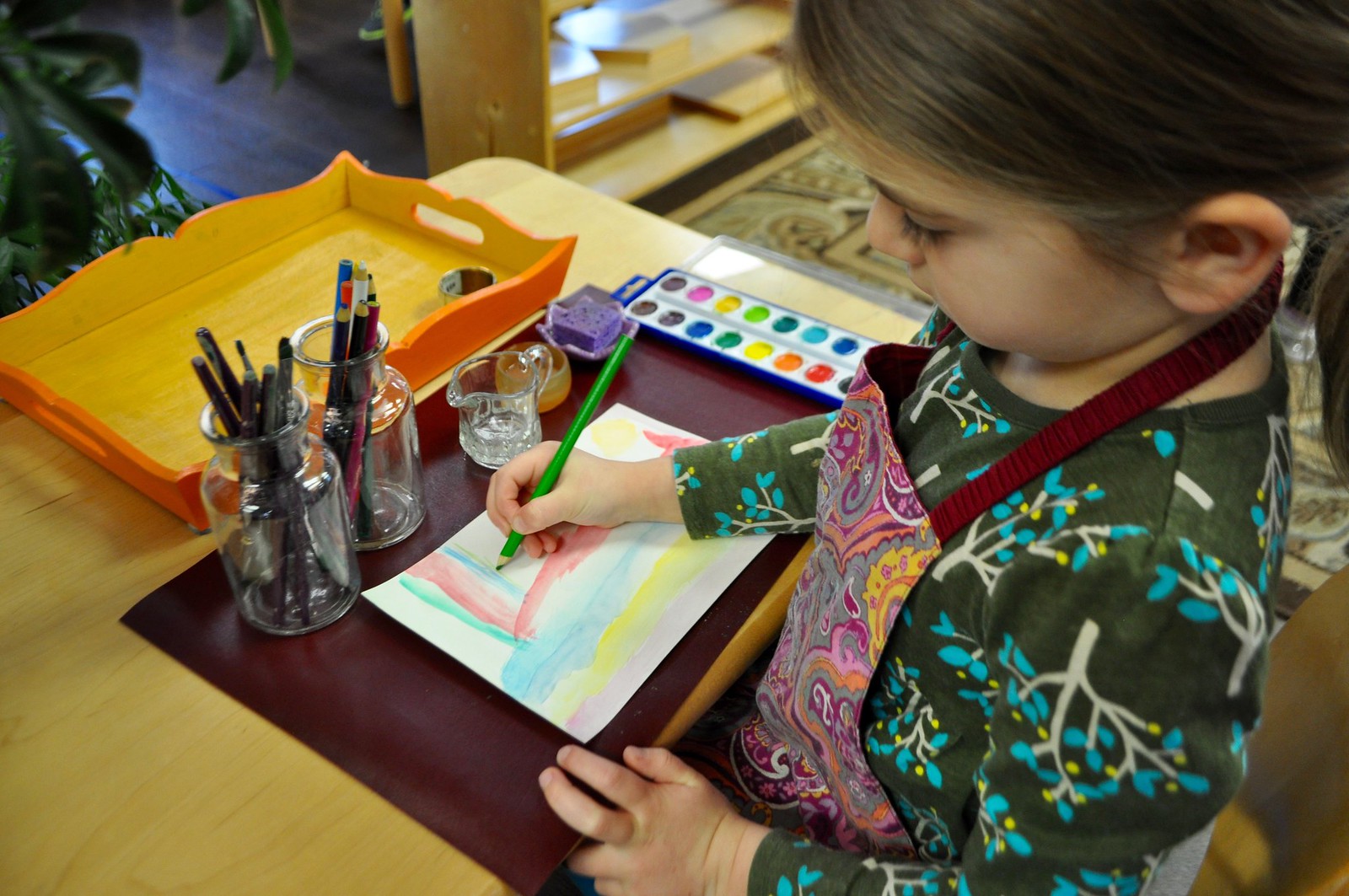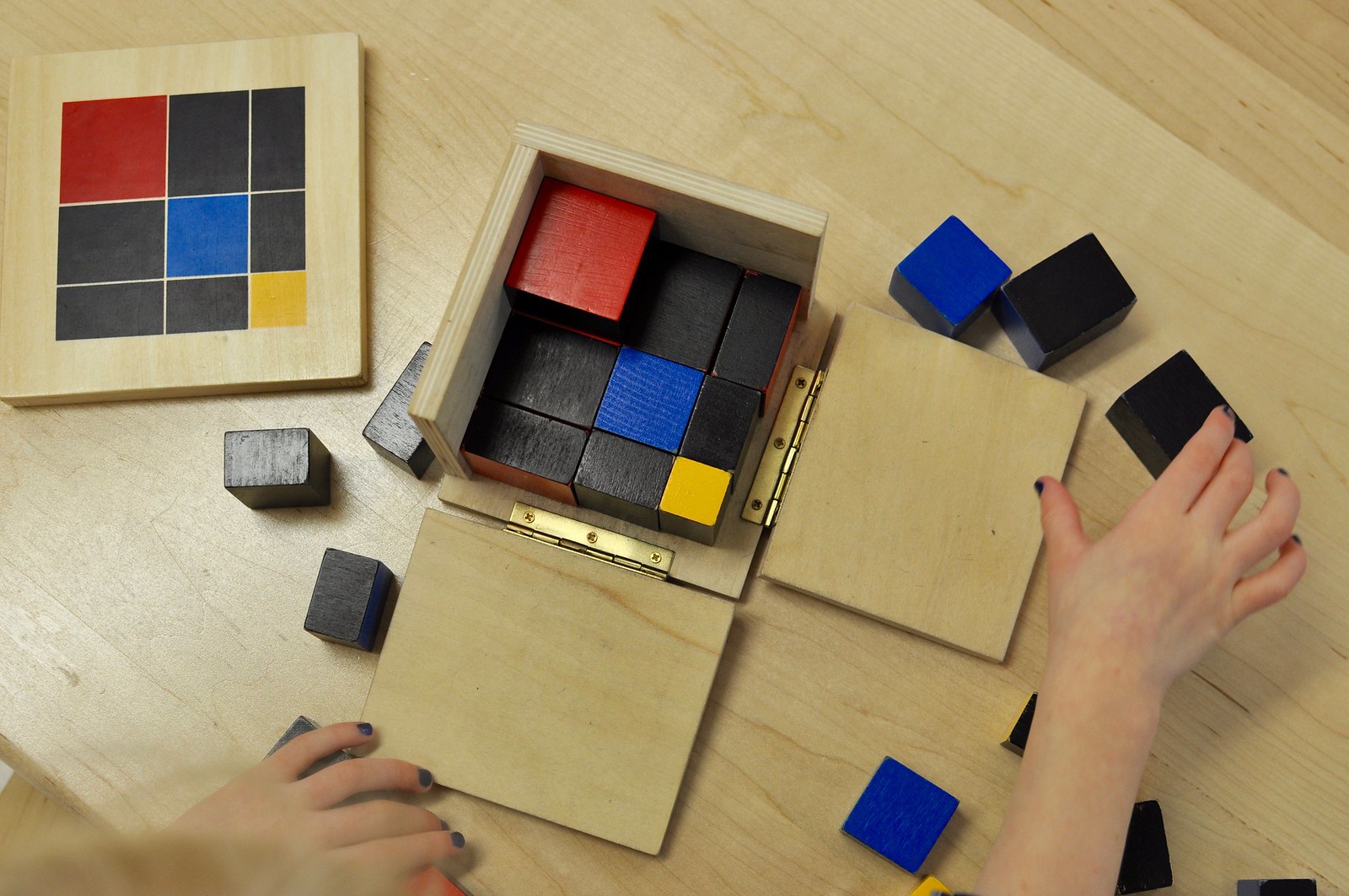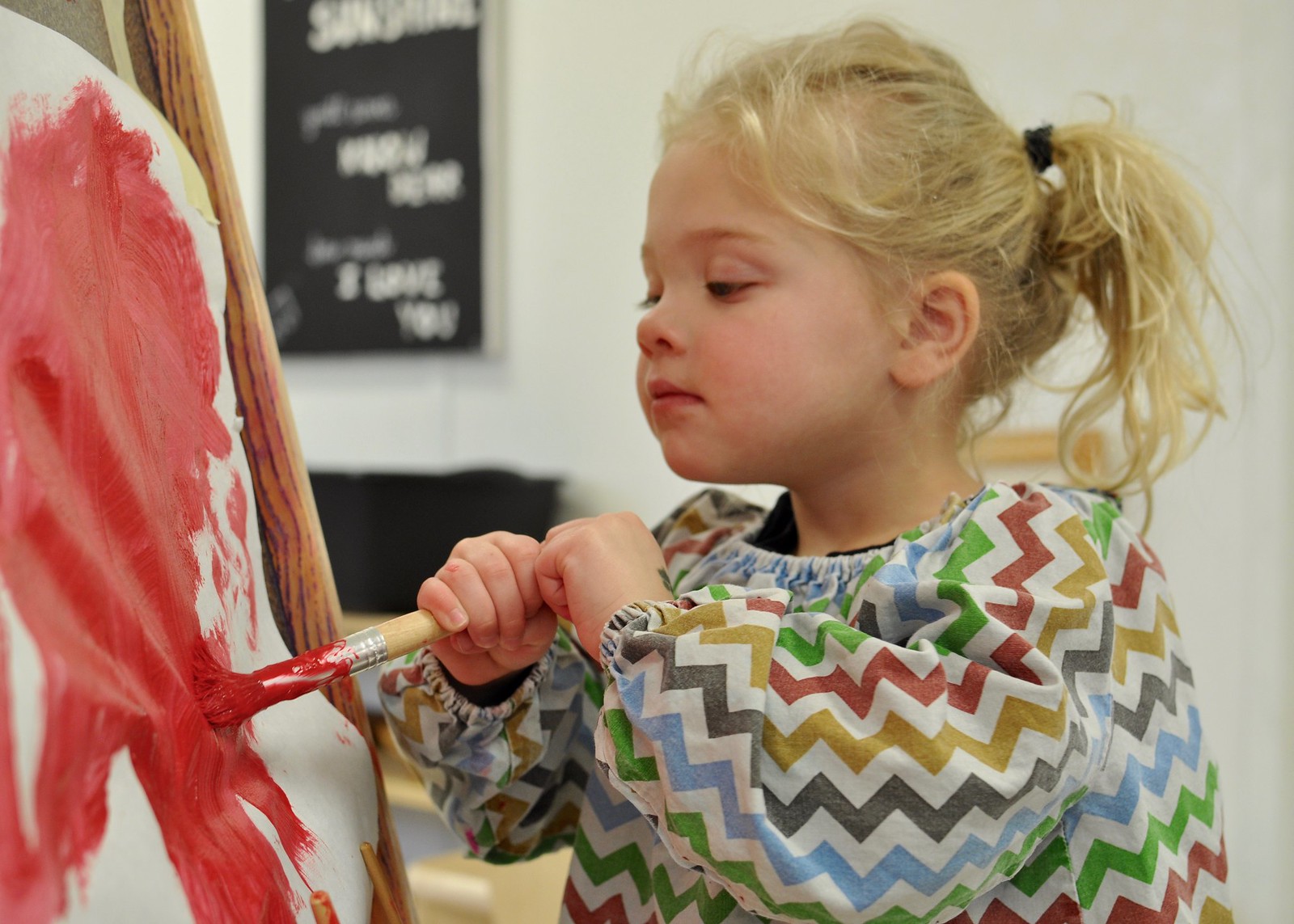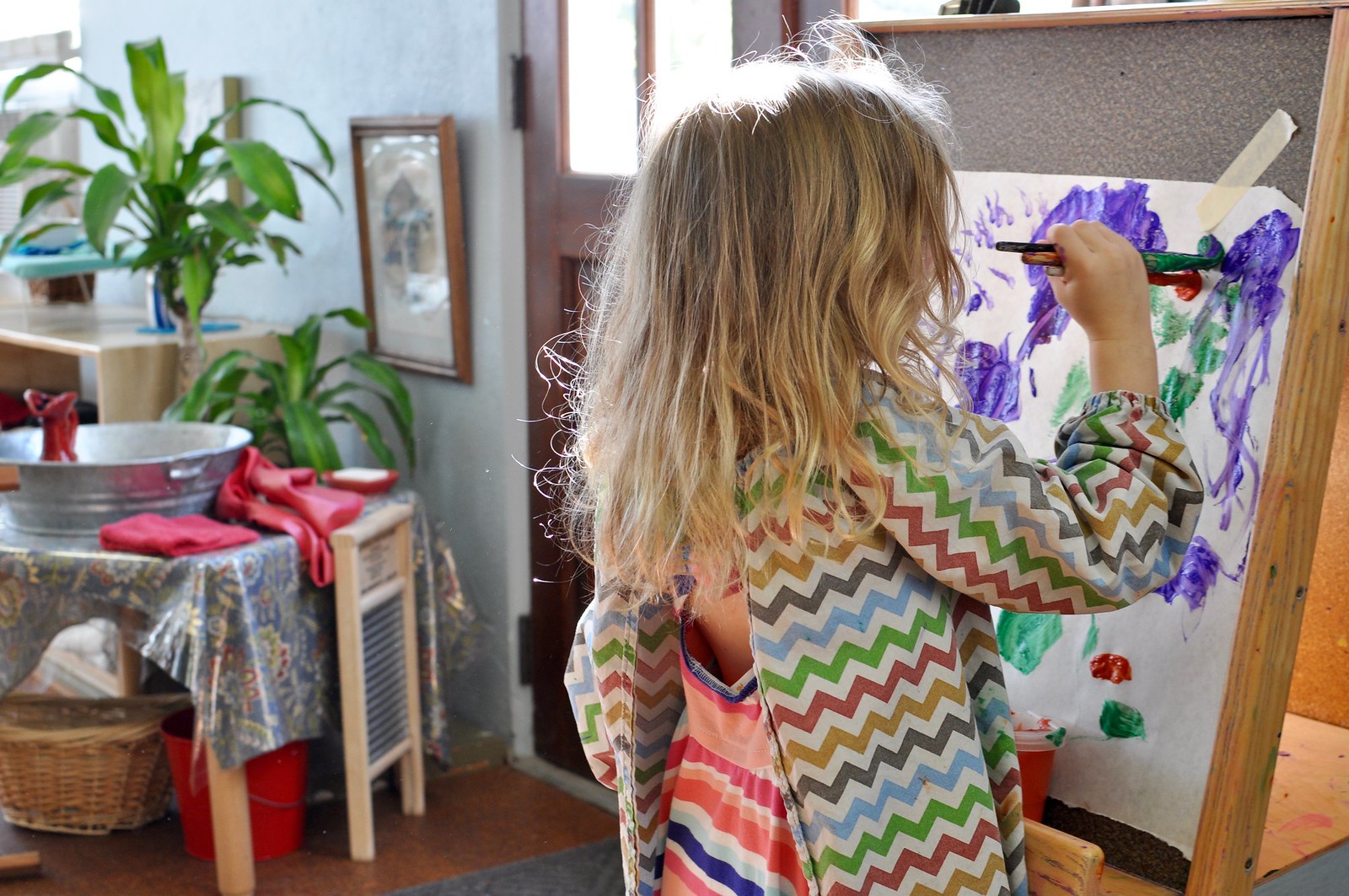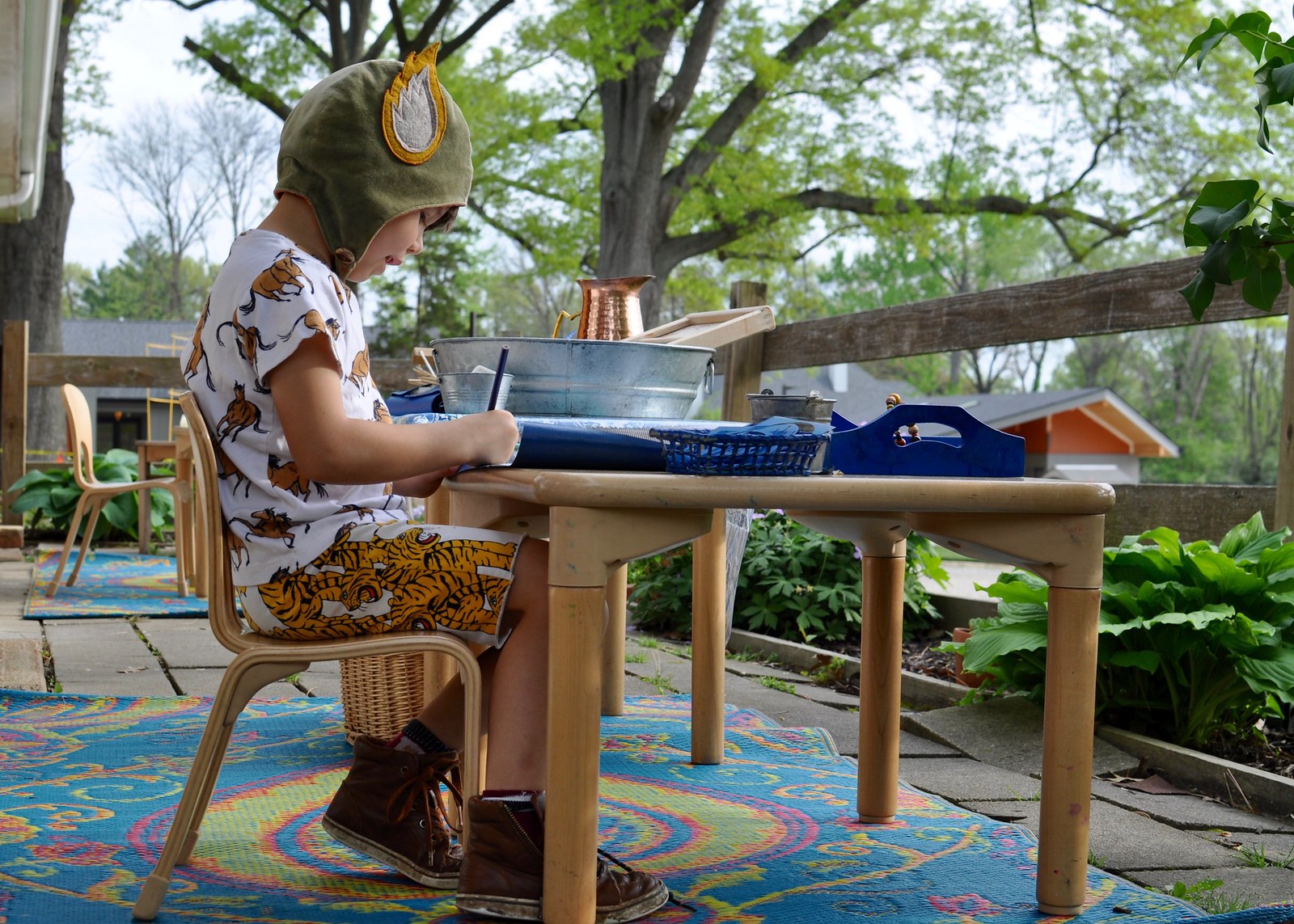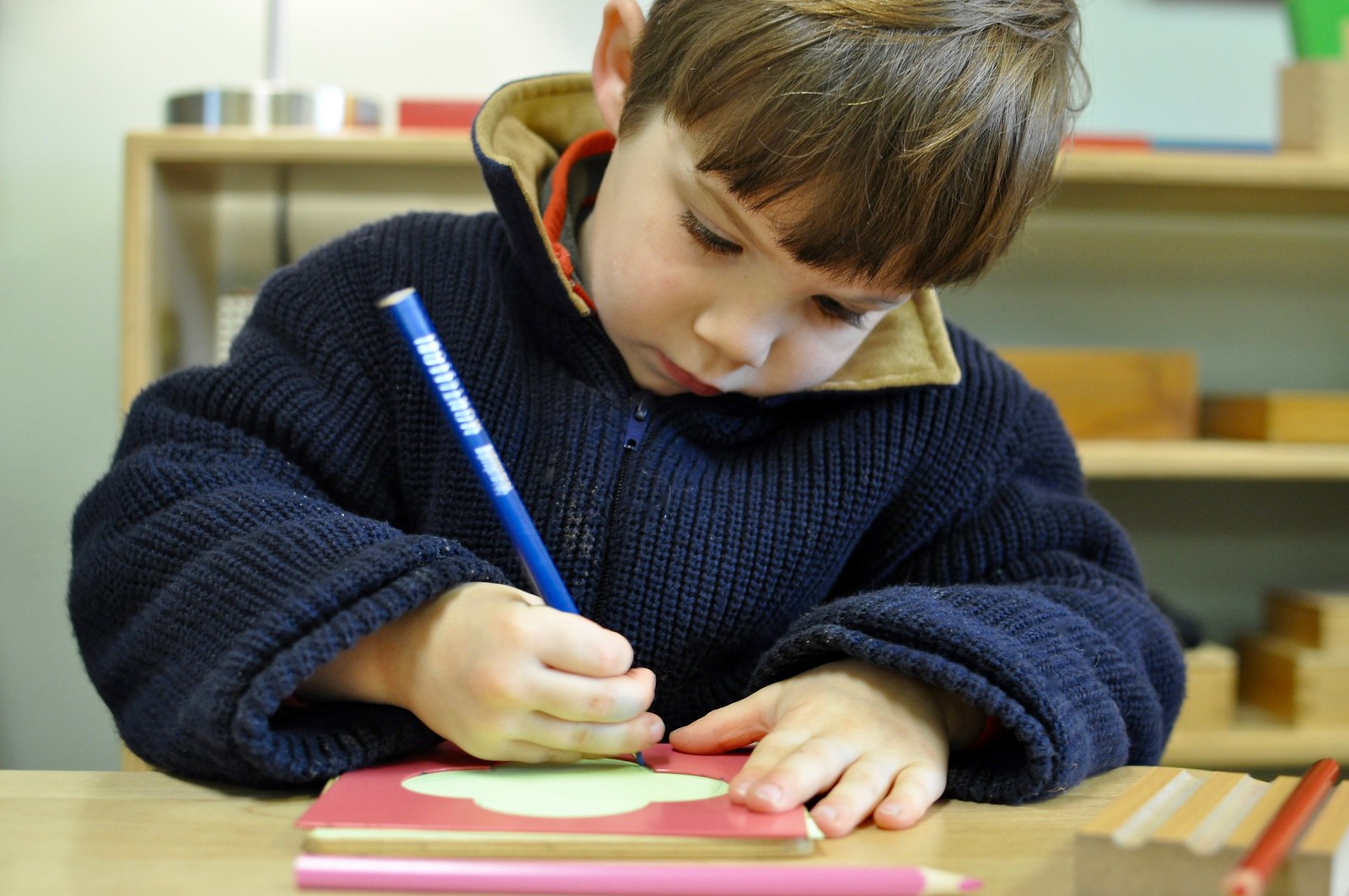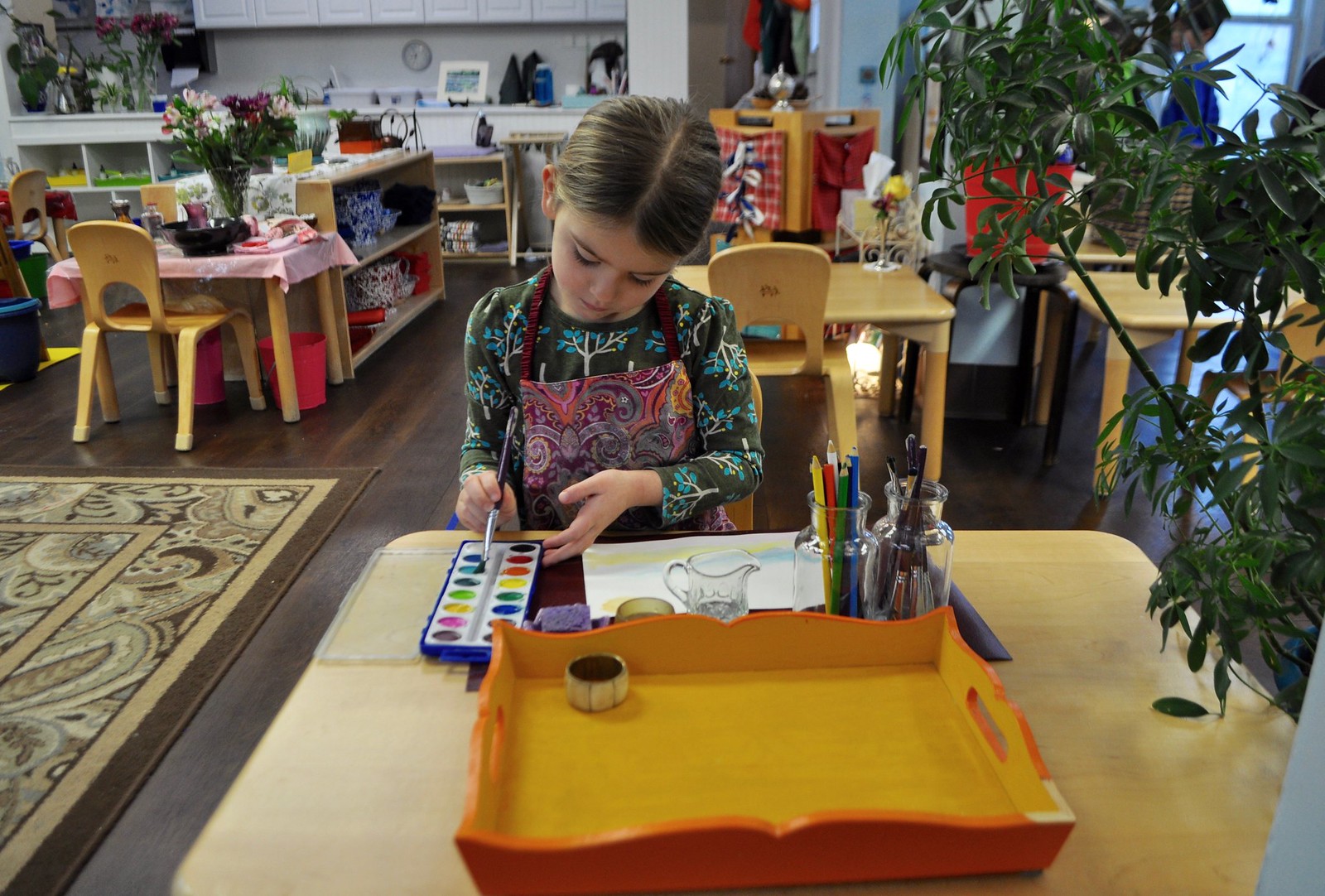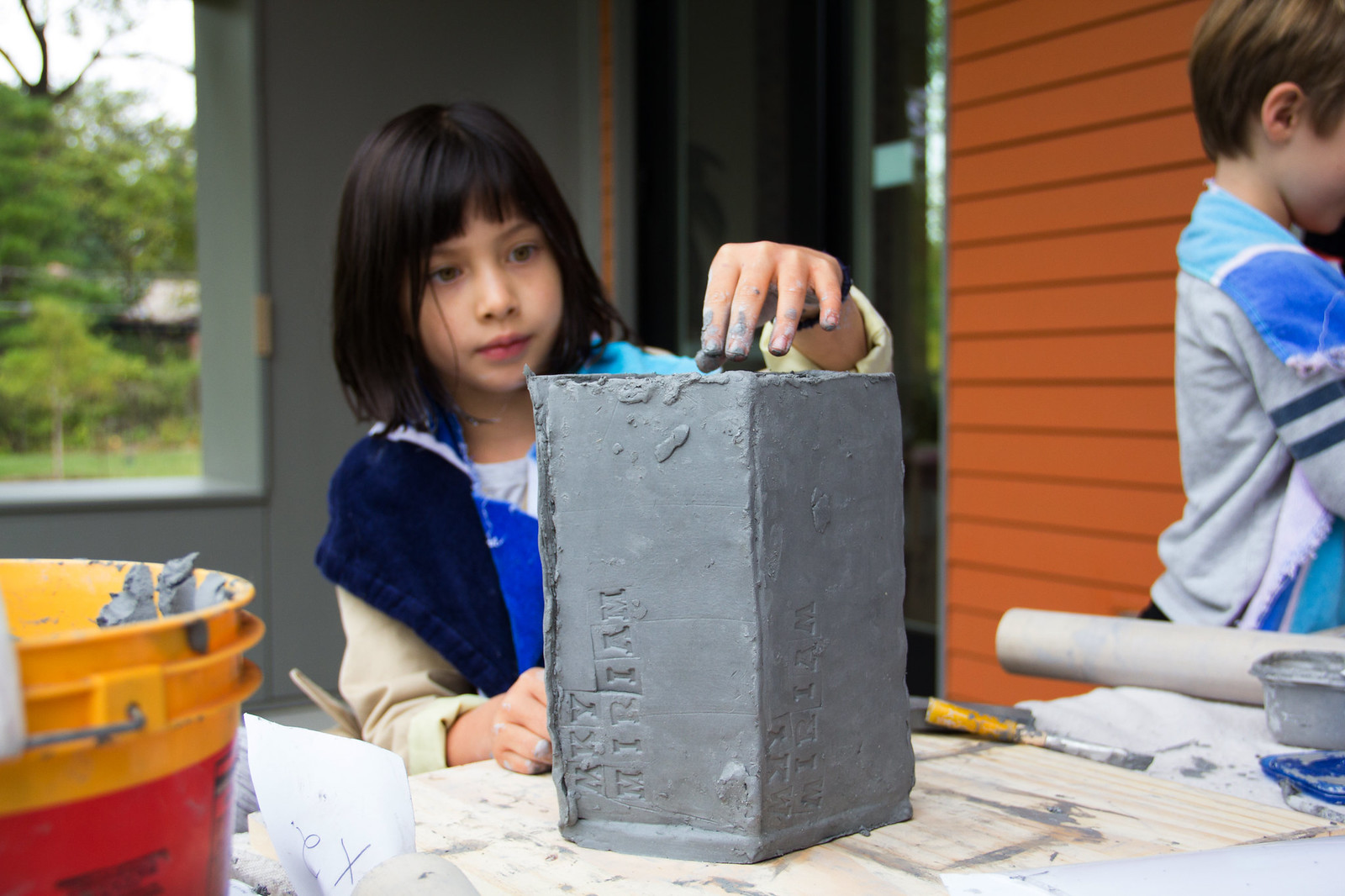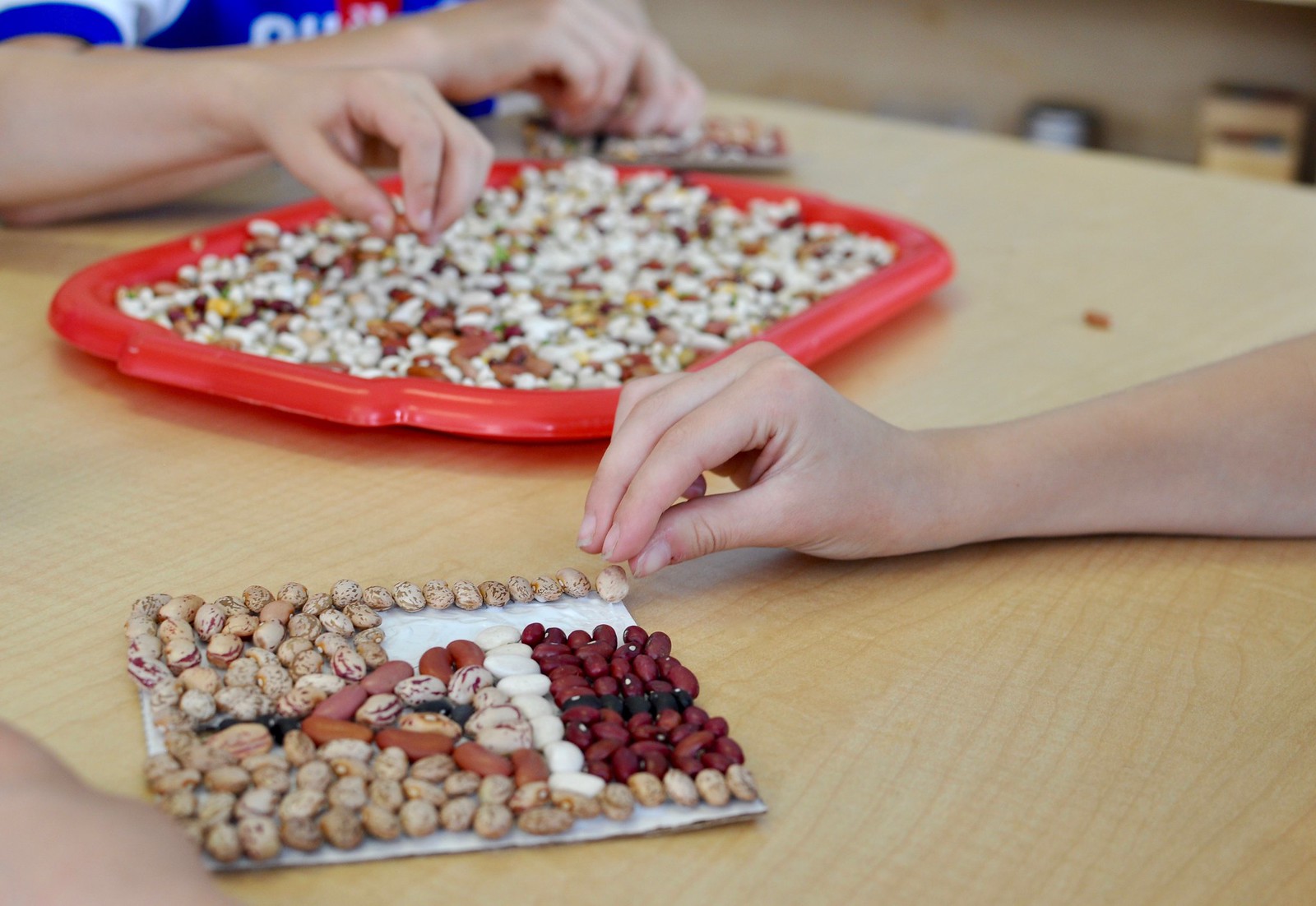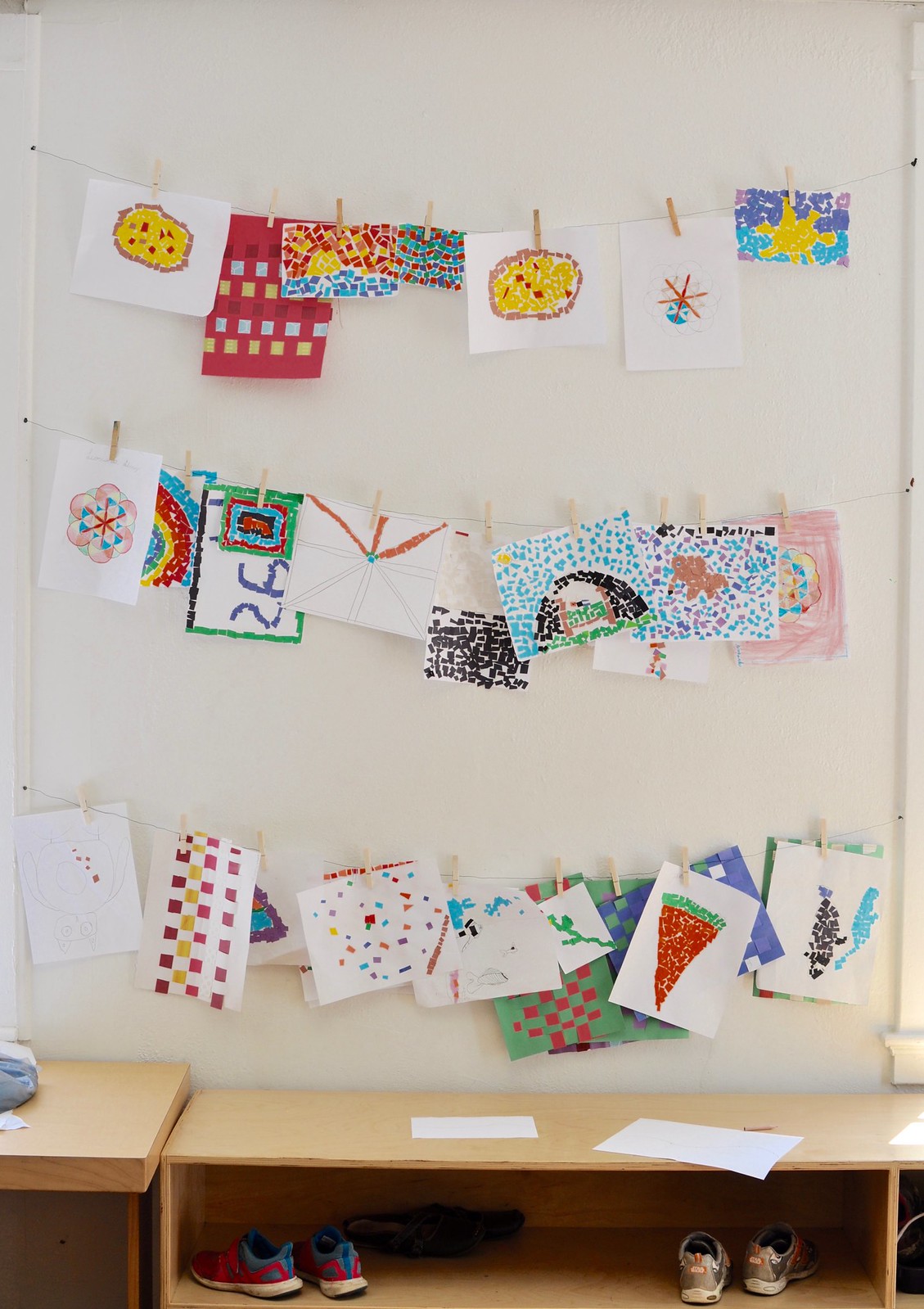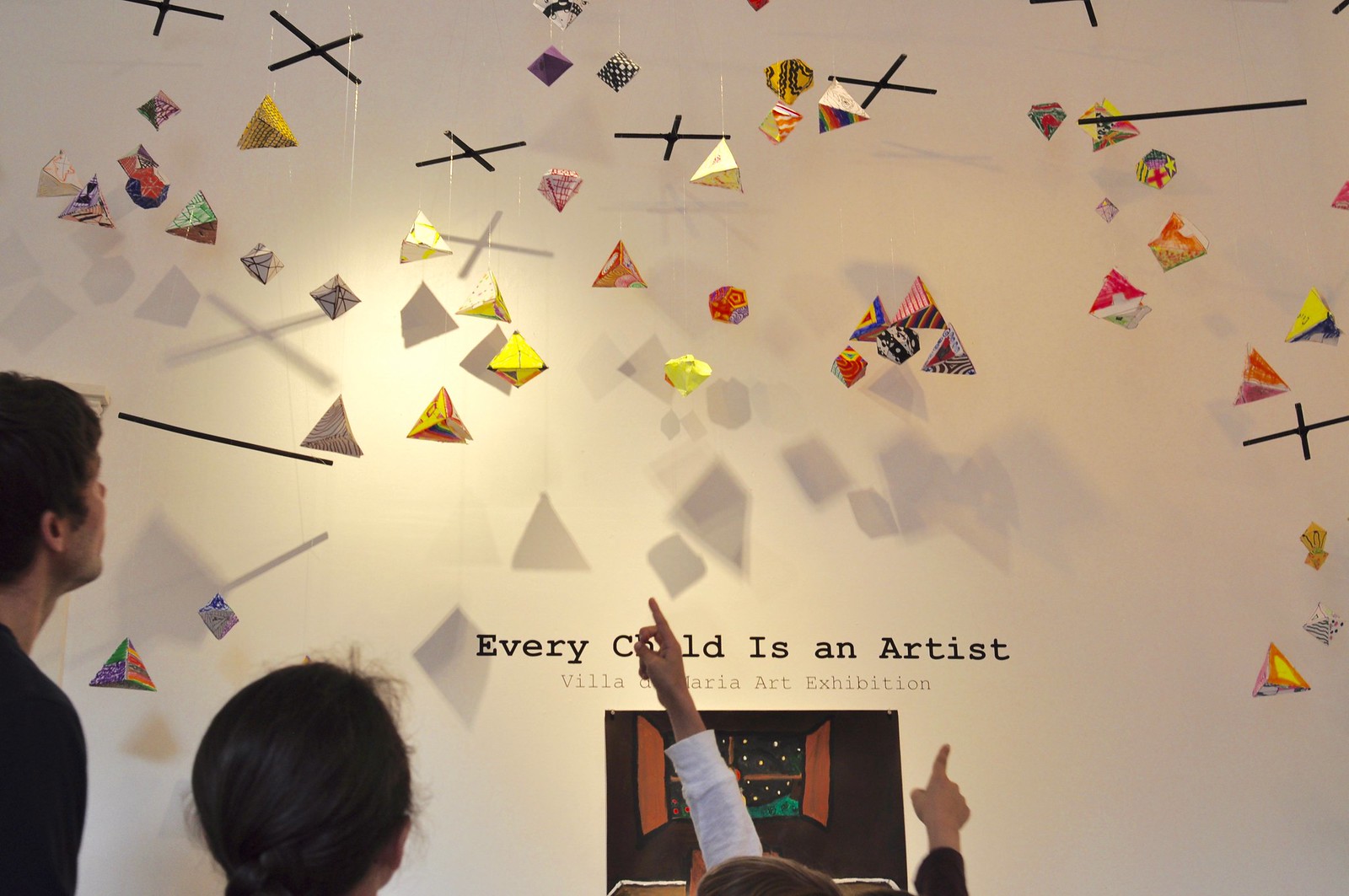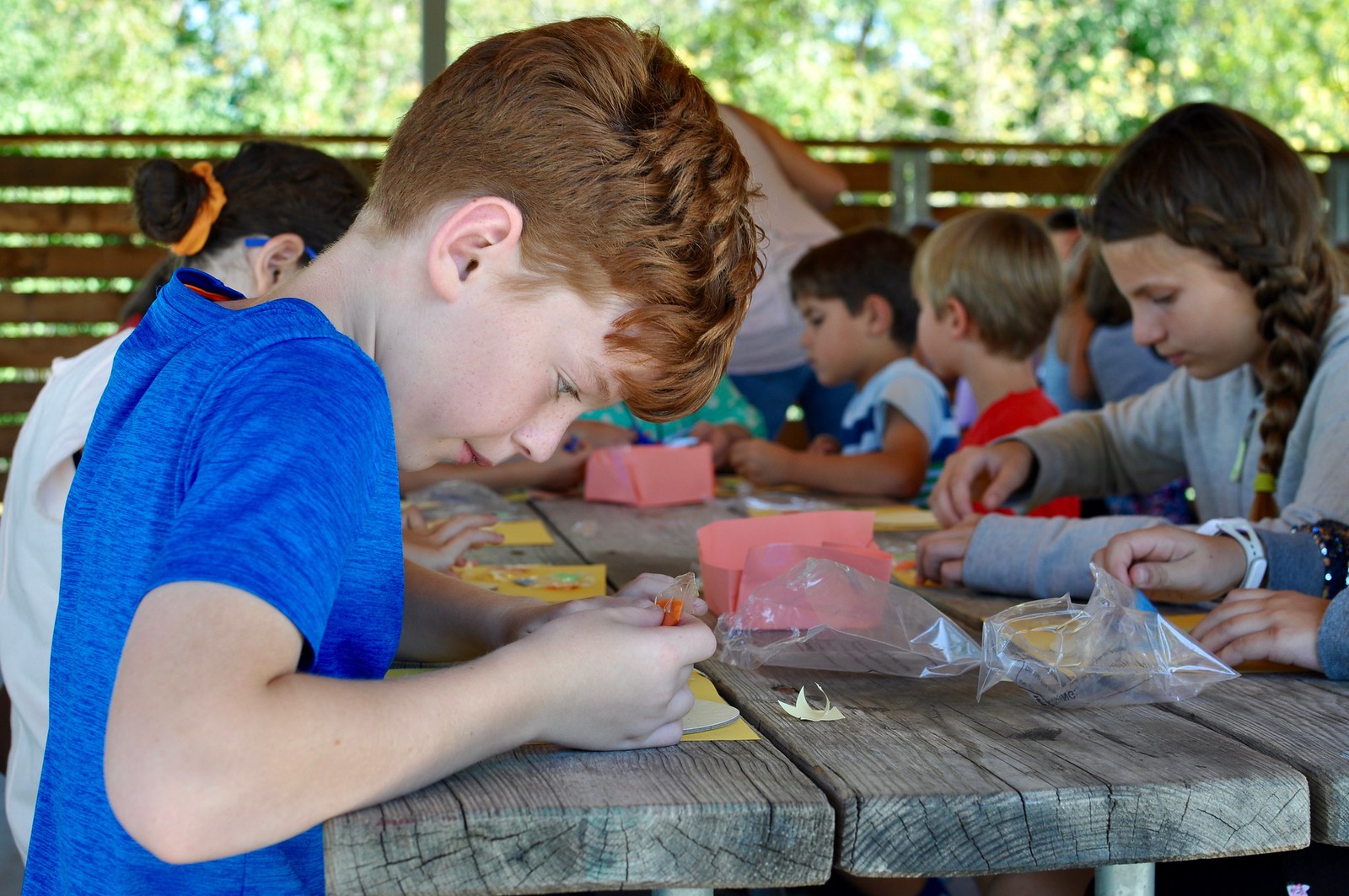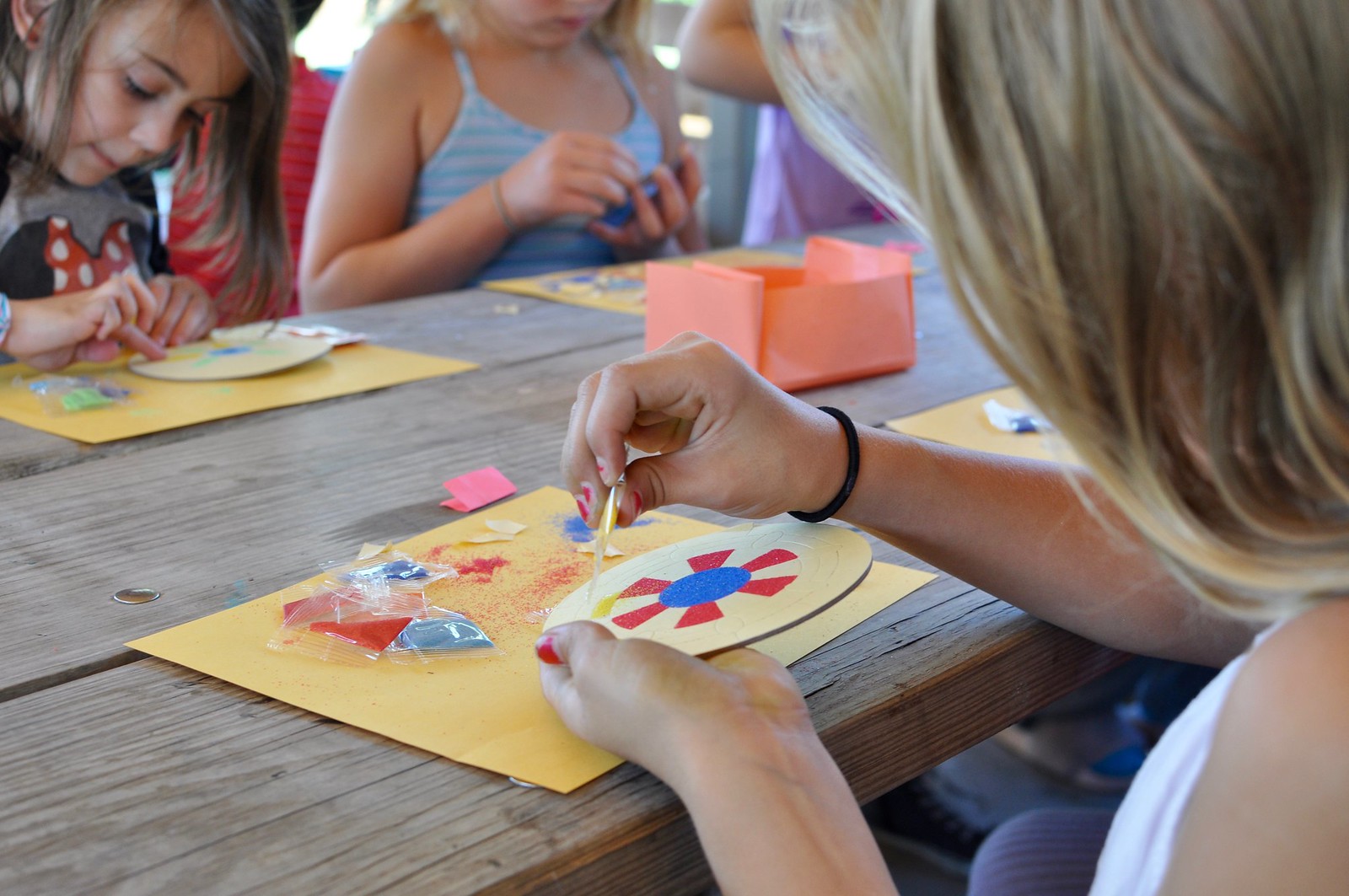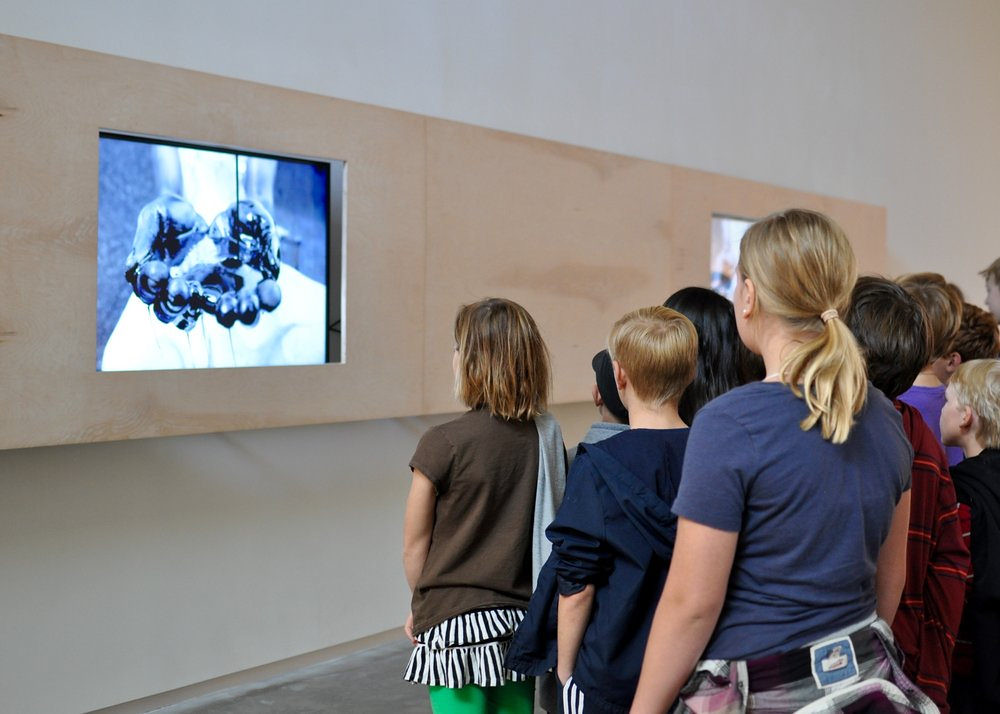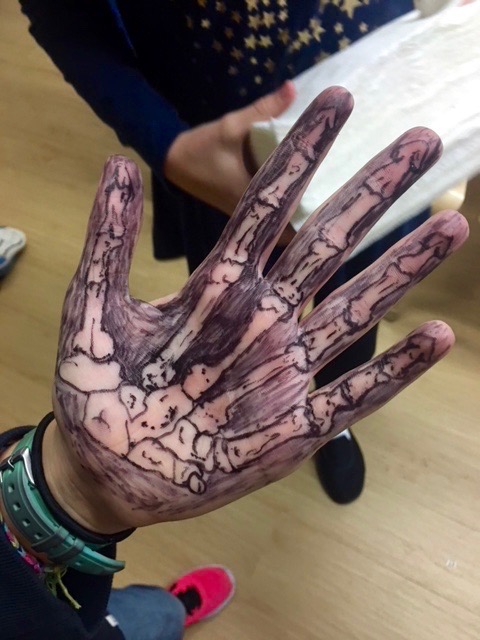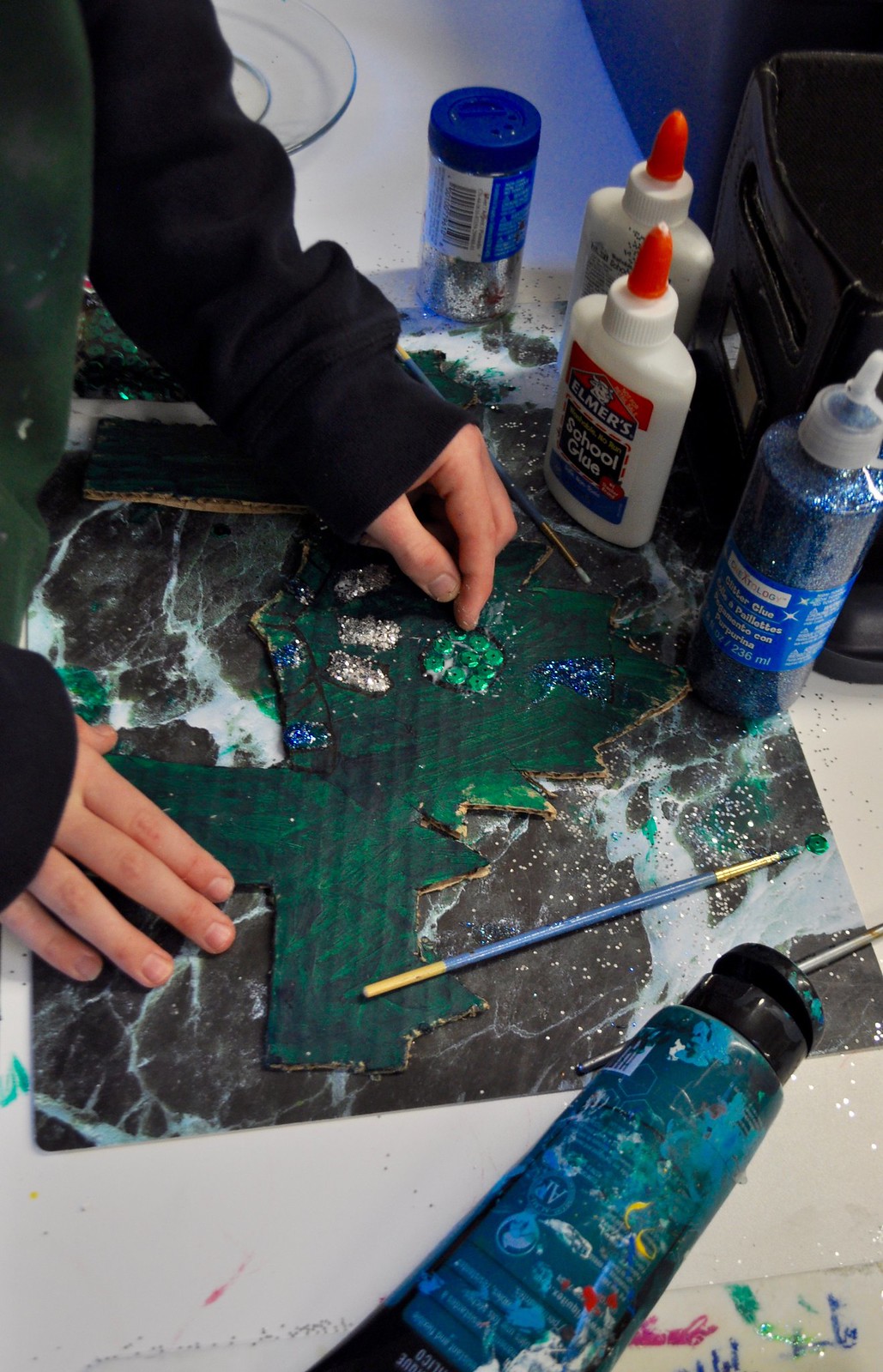 In the regular hustle and bustle of life, it is easy to overlook and even take for granted the basic reasons for why we are here. Here, in this magical place that is Villa di Maria, but more broadly, here, a part of the Montessori world. Entering into the slower, colder months, let us reflect upon just how extraordinary Montessori education is, how lucky we are to be a part of the broader picture, and why we choose, year after year, this particular path. Below, Upper Elementary Directress Rebecca Callendar shares her "Montessori Top 10 List," putting into beautiful words why Montessori education is so effective, wonderful, and amazing. Thank you, Rebecca, for sharing!
In the regular hustle and bustle of life, it is easy to overlook and even take for granted the basic reasons for why we are here. Here, in this magical place that is Villa di Maria, but more broadly, here, a part of the Montessori world. Entering into the slower, colder months, let us reflect upon just how extraordinary Montessori education is, how lucky we are to be a part of the broader picture, and why we choose, year after year, this particular path. Below, Upper Elementary Directress Rebecca Callendar shares her "Montessori Top 10 List," putting into beautiful words why Montessori education is so effective, wonderful, and amazing. Thank you, Rebecca, for sharing! 1. Developmentally AppropriateMontessori education is designed to meet the developmental needs of your child, allowing for age-appropriate learning to take place. In the elementary, this means allowing for group work, development of imagination and moral awareness, great work, and academic rigor throughout the day. Montessori also provides individualized learning for each child, honoring each child’s specific needs. The teacher works closely with each child to determine readiness for new material--we follow the child.
1. Developmentally AppropriateMontessori education is designed to meet the developmental needs of your child, allowing for age-appropriate learning to take place. In the elementary, this means allowing for group work, development of imagination and moral awareness, great work, and academic rigor throughout the day. Montessori also provides individualized learning for each child, honoring each child’s specific needs. The teacher works closely with each child to determine readiness for new material--we follow the child.

2. Continuity of TeachingMontessori teachers genuinely love and care for your children. We undergo intensive training to ensure that we consider each child individually. At Villa di Maria, the teachers hold AMI diplomas and have studied the same coursework and philosophies for each level. As a result, we share the same core curriculum, prepared environments, and teaching values throughout each age level. This continuity allows for seamless transition from classroom to classroom. As teachers, we also value our relationship with parents, our peers and our community--our classroom is our home.


3. Depth and Breadth of CurriculumAt its core, the plan for the education of the elementary child, deemed “Cosmic Education,” is comprehensive in all subjects. As an educational system, at 100+ years old, the content itself is timeless, only needing to be tweaked for cultural relevance and scientific advances. It incorporates remedial learning, first through sixth grade studies, and beyond, exceeding state curriculum by many grade levels. The curriculum is cross-curricular and encourages exploration in differing subject areas simultaneously. All subject areas are presented with equal importance and therefore are of equal value to the child. This allows the child to use art to explore math or math to explore art. Further, the material allows for deepened exploration across the years in school at Villa di Maria. The binomial cube is introduced in the primary classroom on a sensorial level and is reintroduced on a mathematical level in the elementary room.


4. Learning ApproachUnique to Montessori, our method of teaching inspires children’s imagination and encourages follow-up work, allowing for meaningful engaged work, which results in self-directed learning and a natural evolution of concept assimilation. We do this by presenting in short lessons, allowing the child to repeat the work afterward. These short lessons offer stepping stones toward mastery. When the child shows readiness, we build off of previous lessons by introducing new concepts. Lessons are given in small groups to meet the needs of each child and allow the children to discuss their findings with each other, to learn from one another. Children learn by means of story-telling and charts and by Montessori materials. Both ways offer visual and tactile impressions of content, allowing the child to comprehend a concept on many levels. We also value accountability and task organization, showing children how to keep a work journal, and we hold weekly work conferences.

5. Prepared EnvironmentHallmark to a successful Montessori classroom is the prepared environment, which includes Montessori materials for all subject areas, a basic library from which the children explore mentally, and a practical life component of cleaning tools and paper and art supplies. There are plants, animals, and breakable things inside the room, which require great care and respect. The scientific apparatus is real and invokes a sense of reverence and connects the child to the adult world. The room is a calm and beautiful place in which the children co-exist and feel connected to. The room is limited in scope, which creates the need for children to leave the classroom, to go on “Going Outs.” A Going Out is not a field trip, but a small group outing which allows the children to research a topic in the “real world” with an expert in the field.

6. Freedom and ResponsibilityParamount to a child’s success, the Montessori elementary offers children freedom of choice. The elementary aged child is developing their sense of responsibility, moral awareness, and sense of belonging to a group. They are consumed by issues of fairness and right and wrong, but also want to feel connected to their peers. To help the child understand community and develop a sense of responsibility for work choices and begin to extrapolate into the greater issues of history, we offer children many freedoms in the classroom. These can be freedom to make work choices, freedom to move, freedom to choose work partners, freedom to choose research. It is then the responsibility of the child to carry out their choice and be responsible for any transgressions which may occur along the way--we employ logical consequences and allow children to learn from their mistakes. With freedom comes responsibility.

8. No HomeworkWe value a child’s time and feel that academic learning is best suited for the classroom. Children work very hard in the classroom and are challenged emotionally, physically, and academically for 7+ hours each day. Most homework in traditional schools is busy-work or contains material that the child could have learned in school, if school had given them the chance to learn the material. Further, rest is an important factor in skill acquisition. By allowing the content of the day to rest in the mind of the child, the brain can begin to process the information at the same rate as if the child were doing the homework itself. Also, we feel that family life is of equal value to the child’s school life and want the child to stay connected at home.
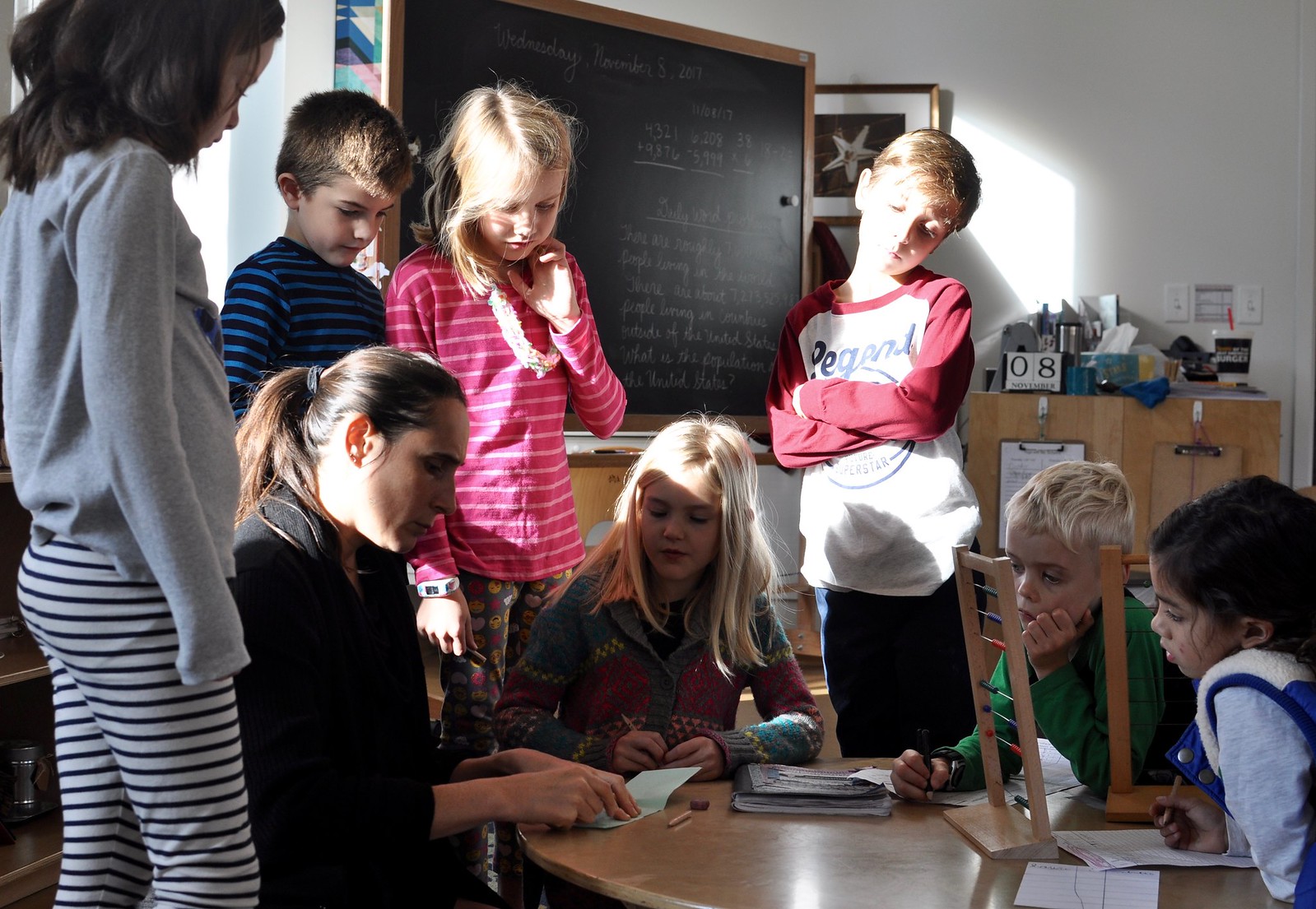
9. Education for LifeA Montessori education provides children with many outcomes including depth of comprehension, love of learning, self-motivation, self-confidence, independence, life skills, study skills, interpersonal skills, and academic excellence. Montessori graduates remain curious and engaged lifelong learners.

10. Education for PeaceMontessori education fosters a deep respect for all human beings on earth, no matter what their background, belief, or status. Montessori education cultivates a deep connection to the world and the environment. A Montessori child is a steward to every living thing on earth. As a result, the child is deeply peaceful and then can help to fulfill Dr. Montessori’s vision for a world where peace, love, and respect reigns supreme.

Thank you, again, Rebecca, for sharing your Top 10 list!
We are so grateful for each and every one of you, and hope you have a wonderful holiday break. See you next year!
 Every year, Villa di Maria hosts Silent Journey, wherein parents who participate are lead on a Montessori journey in order to experience the philosophy firsthand. They receive lessons from the Children's House on up through Upper Elementary, over the course of two days. While Silent Journey deserves its own blog post, one lesson that was given this time around was Parts of a Flower, by Upper Elementary Guide Rebecca Callander. Below, she shares the lesson with a small group of Upper Elementary children using some of the extra flowers leftover from Silent Journey. Part of the beautiful lesson, below.
Every year, Villa di Maria hosts Silent Journey, wherein parents who participate are lead on a Montessori journey in order to experience the philosophy firsthand. They receive lessons from the Children's House on up through Upper Elementary, over the course of two days. While Silent Journey deserves its own blog post, one lesson that was given this time around was Parts of a Flower, by Upper Elementary Guide Rebecca Callander. Below, she shares the lesson with a small group of Upper Elementary children using some of the extra flowers leftover from Silent Journey. Part of the beautiful lesson, below. 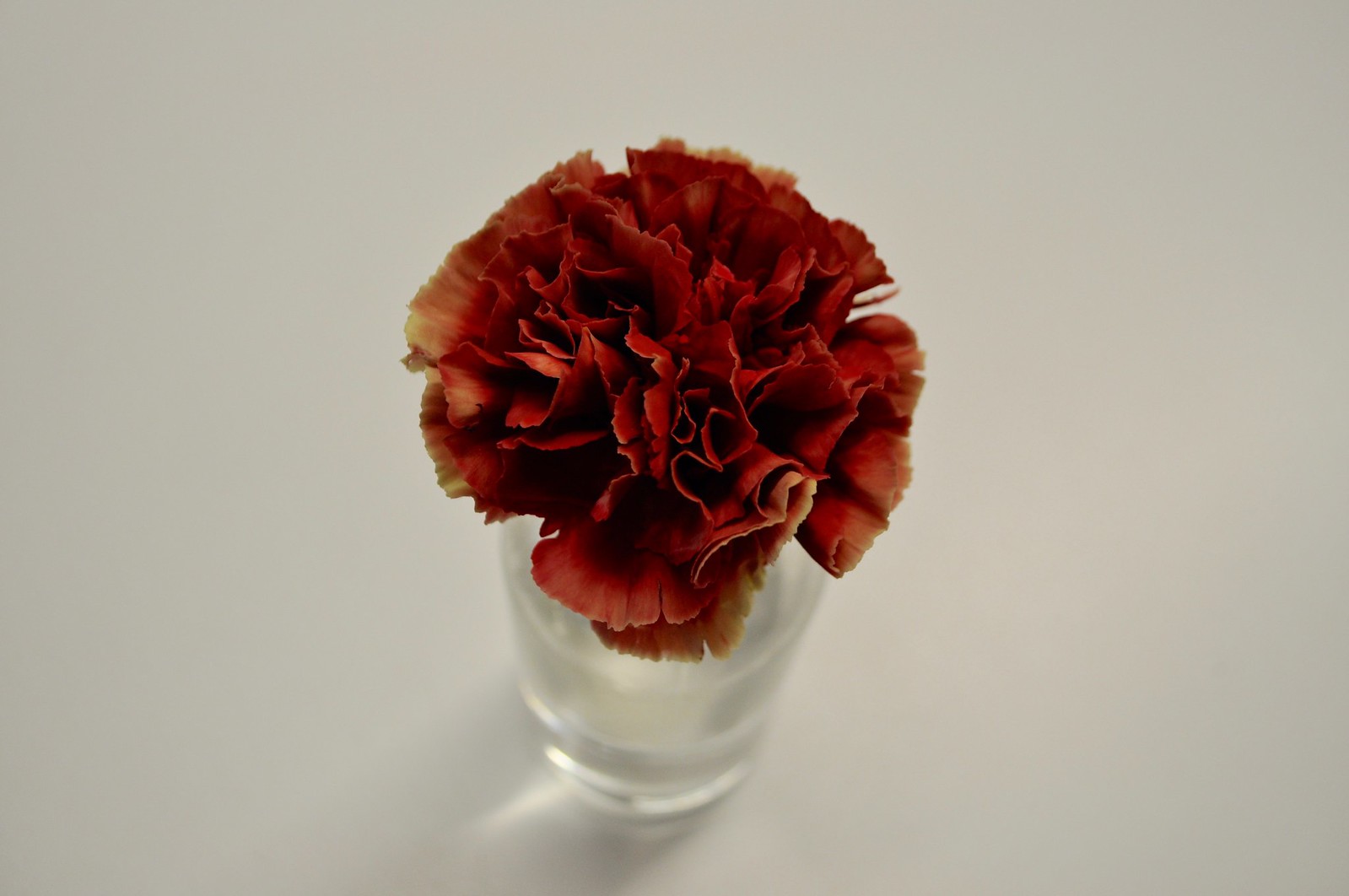 Drawing attention to the beauty of the flower is easy, especially in the middle of the winter when colors outside are limited to muted grays and browns. Rebecca begins by focusing her attention on the beautiful display the flower produces, noting that when all the pollinators are out, they are drawn to the flashy bright colors the flower displays. But why?
Drawing attention to the beauty of the flower is easy, especially in the middle of the winter when colors outside are limited to muted grays and browns. Rebecca begins by focusing her attention on the beautiful display the flower produces, noting that when all the pollinators are out, they are drawn to the flashy bright colors the flower displays. But why? The Parts of a Flower lesson is an introduction to reproduction; plant reproduction requires male and female parts of the plant. The childrens' eyes grow wide with this recognition!
The Parts of a Flower lesson is an introduction to reproduction; plant reproduction requires male and female parts of the plant. The childrens' eyes grow wide with this recognition!
 Rebecca identifies the colorful petals that make up the corolla, the part of the flower that we first notice, and that attracts insects and birds to the nectar glands on or near their base. On this particular flower, Rebecca notes that the patterns and colors act as a sort of "landing strip" for insects. The children are fascinated.
Rebecca identifies the colorful petals that make up the corolla, the part of the flower that we first notice, and that attracts insects and birds to the nectar glands on or near their base. On this particular flower, Rebecca notes that the patterns and colors act as a sort of "landing strip" for insects. The children are fascinated.
 She carefully points out the stamens, the male parts of the flower that produce the pollen.
She carefully points out the stamens, the male parts of the flower that produce the pollen. The children take turns reading from the materials that accompany this lesson, taking time to examine the flower with each new piece of information.
The children take turns reading from the materials that accompany this lesson, taking time to examine the flower with each new piece of information.
 A child examines the calyx, or the outer whirl of the flower, which is made up of sepals, and primarily serves to prevent loss of water from the inner developing flower parts. They note the differences between the calyx of one type of flower versus another; one appears completely green, like leaves, while the other more closely resembles the petals of the flower.
A child examines the calyx, or the outer whirl of the flower, which is made up of sepals, and primarily serves to prevent loss of water from the inner developing flower parts. They note the differences between the calyx of one type of flower versus another; one appears completely green, like leaves, while the other more closely resembles the petals of the flower. Now, it is time to dissect the flower. Rebecca demonstrates how to separate the receptacle from the rest of the flower so that they may examine the inside of the pistil and ovules of the flower. The children take the time to tape and label each part of the flower onto a black piece of paper.
Now, it is time to dissect the flower. Rebecca demonstrates how to separate the receptacle from the rest of the flower so that they may examine the inside of the pistil and ovules of the flower. The children take the time to tape and label each part of the flower onto a black piece of paper.


 While they discuss the role of the pistil (the female part of the flower that produces the ovules that become seeds), children take turns examining it under the microscope. This particular pistil was made up of one carpel, though many flowers have multiple carpels.
While they discuss the role of the pistil (the female part of the flower that produces the ovules that become seeds), children take turns examining it under the microscope. This particular pistil was made up of one carpel, though many flowers have multiple carpels.



 Once the children were finished labeling the parts of this flower, they were eager to dissect a different one on their own. They chose a yellow rose, and Rebecca quietly stepped away to allow them the independent experience of repeating the lesson they had just been shown.
Once the children were finished labeling the parts of this flower, they were eager to dissect a different one on their own. They chose a yellow rose, and Rebecca quietly stepped away to allow them the independent experience of repeating the lesson they had just been shown.
 This eager curiosity is such a big part of the Montessori method of learning. That children can hardly wait to learn more, to investigate and further explore the natural world at their fingertips, is the beauty of this timeless way of approaching the world. We are inspired just by observing it all!Thank you, Rebecca, for giving us a glimpse into this lesson, and to all the joy it brings!
This eager curiosity is such a big part of the Montessori method of learning. That children can hardly wait to learn more, to investigate and further explore the natural world at their fingertips, is the beauty of this timeless way of approaching the world. We are inspired just by observing it all!Thank you, Rebecca, for giving us a glimpse into this lesson, and to all the joy it brings!

